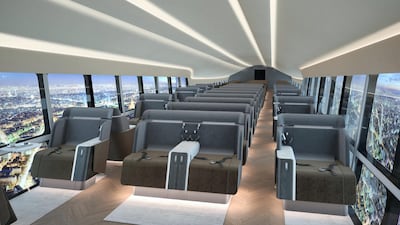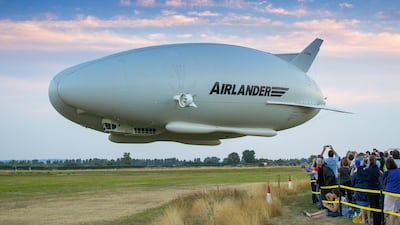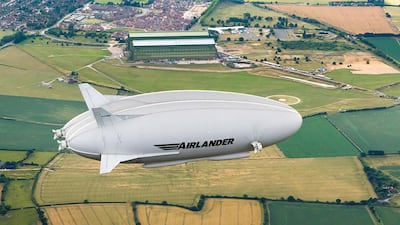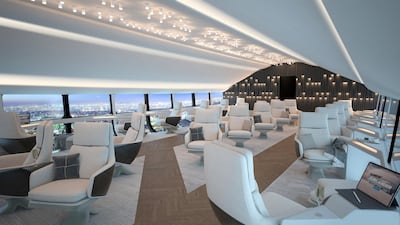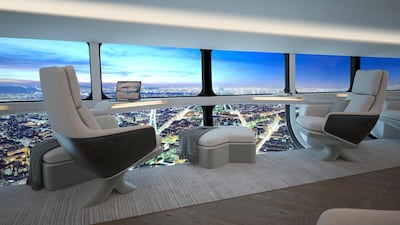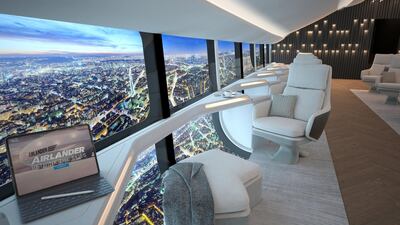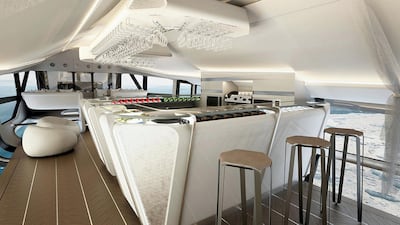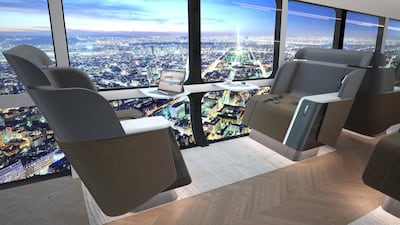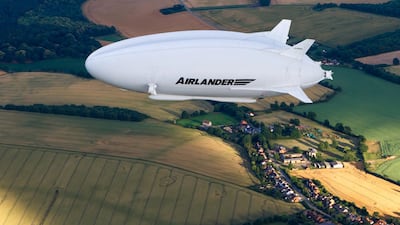Short-haul, city-hopping air travel is set to get an environmental alternative thanks to a new hybrid airship being developed in the United Kingdom.
The Airlander 10 by Hybrid Air Vehicles (HAV) is a 100-passenger airship that runs on helium and electricity and is capable of flying at speeds of up to 130 kilometres per hour, and being airborne for five continuous days.
On a mission to "rethink the skies", the English company is aiming to launch the hybrid-electric Airlander 10 by 2025, and has released details of some of the possible routes that the vehicle could serve.
These include city centre to city centre journeys from Liverpool to Belfast, Seattle to Vancouver, Barcelona to Palma and Oslo to Stockholm.
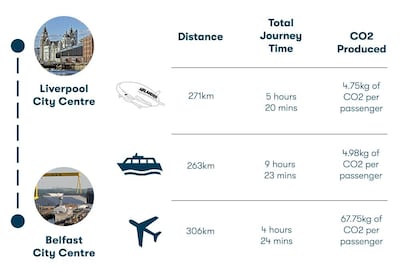
On short-haul flights, the Airlander 10 is capable of slashing carbon dioxide emissions by up to 90 per cent compared to a regular aircraft. HAV says the CO2 footprint on its airship will be about 4.5 kilograms per passenger, compared to over 50kg per traveller on a regular jet.
This is possible because an Airlander aircraft use lighter-than-air technology to burn less fuel in flight than conventional jets. The buoyant lift of helium also offsets the weight of the aircraft, requiring much less thrust to generate take-off, which usually makes aviation one of the most carbon heavy sectors.
Floor-to-ceiling window views and all-aisle seating
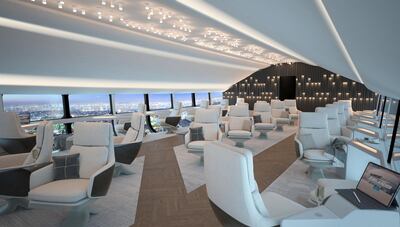
The futuristic-styled airship comfortably seats up to 100 passengers and has a spacious cabin where everyone gets direct access to the aisle. Floor-to-ceiling windows give all passengers incredible views while letting plenty of natural light into the vehicle.
Flying on the Airlander also offers a more restful journey than traditional flights. Slower speeds mean that passengers have less cabin noise to contend with, and it cuts down on vehicle vibrations.
With a maximum cruising height of 20,000 feet, the airship will typically fly at lower altitudes than a traditionally aircraft, giving passengers a more interesting vantage of Earth from the sky. Turbulence is also reduced due to the airship's nearly 100-metres long hull.
And while the vehicle may look like it could be blown off-course as easily as a giant helium balloon, it has been built to be able to land in winds of up to 30 knots and is capable of withstanding lightning strikes and icy conditions. It is also less affected by cross-winds than regular aircrafts, as it can turn into the wind and take off in any direction.
Tarmac, sand, grass or water runways
The same goes for ease of landing. Airlander airships can fly point-to-point rather than relying on traditional infrastructure such as airports and hangers. All that is needed is a flat open space of at least 600 metres diameter, which can be on any surface such as grass, sand, or water.
This allows Airlander 10 to be able to take travellers to some of the farthest corners of the world. HAV has already signed a deal to deliver an airship to Swedish travel company OceanSky Cruises, which plans to use the vehicle to offer trips over the North Pole.
"For many decades flying from A to B has meant sitting in a metal tube with tiny windows – a necessity but not always a pleasure. On Airlander, the whole experience is pleasant, even enjoyable," said George Land, commercial business development director at HAV.
Before launching the Airlander 10 commercially, HAV is in talks with airlines who will be the ones operating the vehicles. Already approved by The European Aviation Safety Agency (Easa), Airlander will have a Civil Aviation Authority certificate before it takes flight with passengers on board.
Slashing short-haul flight emissions
Carbon dioxide emissions on short haul flights are the worst environmental culprits in the aviation world.
Aircraft on routes of 700km or less emit more CO2 per person for every kilometre travelled than long-haul flights, says a recent report by Robeco, specialists in sustainable investing. This is because take-off and landing on any flight uses the most fuel, so the longer you spend in the air once you're up, the better.

The record for the world’s shortest scheduled flight can be found in Scotland. In the northern islands of Orkney, about 1,000km from Iceland, Loganair operates a 2.7km flight from Westray to Papa Westray.
In good weather, the journey takes less than two minutes, but rolling seas and a lack of causeways or tunnels mean that flying is one of the only safe ways to connect these island communities.
Airlander could provide airlines such as Loganair and others the option to continue providing short-haul travel for customers, but in a more sustainable way.
It also allows airlines to retain customers who city-hop between domestic points, before embarking on long-haul international flights which are typically the most profitable routes.
For HAV, despite Airlander's capabilities, there is more work to do. The hybrid model of Airlander 10 operates on a mix of electricity and helium, of which helium is a non-renewable resource.
"According to the US Geological Survey, there are at least 50 years of known helium reserves based on current consumption. Six hundred Airlander aircrafts would account for just 1 per cent of annual helium consumption," states the HAV website.
The company has committed to being 100 per cent carbon-free by 2030, when all four engines on Airlander crafts will be entirely electric.
